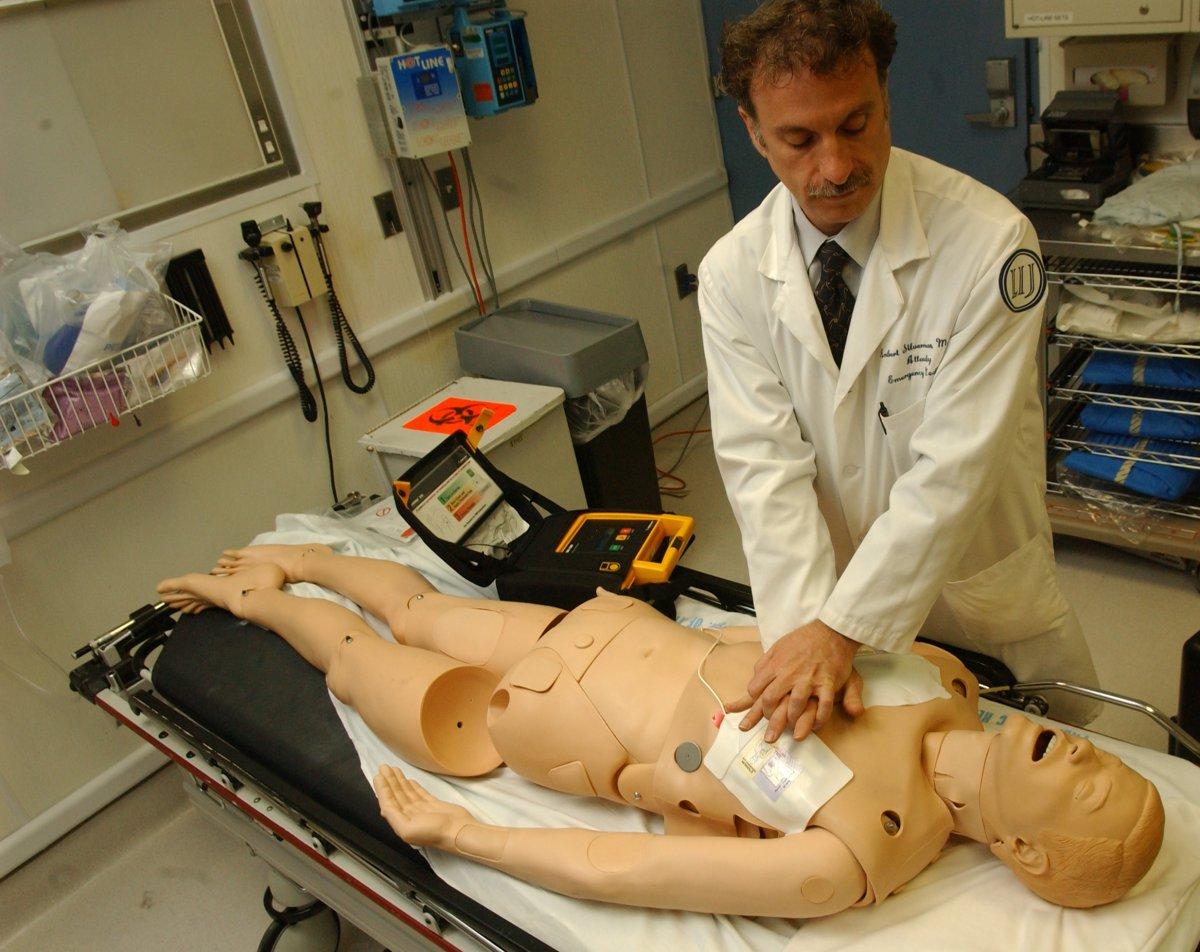The Power To Save A Life, In Your Hands

To the rescue (Bates, Susana Freelance)
Sudden cardiac arrest kills one person every two minutes. That is about 400,000 deaths in the U.S. each year. That’s half of all heart disease deaths.
Those deaths afflict seemingly healthy people of all ages and races, often without warning, including one in nine men. It is less common in women, but they are 50% less likely to receive bystander help.
What far too few Americans understand is that we hold in our hands the power to save far more lives if, by the millions, we are better informed about how to recognize the symptoms and quickly react when someone is in urgent need of assistance.
This isn’t true of cancer, diabetes, Alzheimer’s or other killers. But ordinary citizens can stop cardiac arrest from taking lives if they intervene instantly and intelligently.
Cardiac arrest occurs when the electrical activity of the heart fails, causing the heart to stop pumping — resulting in an almost instantaneous loss of consciousness. The cause can be an existing heart condition (which it is in the vast majority of cases ) or something as random as a healthy child being hit in the chest with a baseball, a condition known as “commotio cordis.”
We all are grateful for emergency medical professionals, who do heroic work. But they’re not the only ones able to help in a moment of crisis.
In 2015, the Institute of Medicine released a report, “Strategies to Improve Cardiac Arrest Survival: A Time to Act,” and called on communities to improve bystander response to victims of sudden cardiac arrest. Despite this, little progress has been made.
Across America, whether in cities, suburbs or rural areas, bystander response remains dismal. Most people feel helpless when they witness a cardiac arrest because they don’t know what to do. Others don’t perform CPR because they are afraid they will do it incorrectly and harm the victim. They likely don’t realize that every state has good Samaritan laws to protect people who try to help.
There’s also a cultural problem we need to correct.
Most people don’t know that what’s known as “hands-only CPR” is comparable to conventional CPR — with mouth-to-mouth resuscitation, the kind you often see on TV and in the movies — and is the standard of care.
Hands-only CPR can double or triple a victim’s chance of survival. It is what is needed to keep blood flowing to the brain until paramedics arrive, which will not only mean a greater chance of saving the life, but a far larger likelihood of restoring the person to their precardiac-arrest self.
You can learn hands-only CPR in less than a minute. We have created a simple instructional video at handsonly.nyc. The fundamentals are easy.
First, check to see if the person is breathing. Then, call 911. Then, compress: Lay the victim flat on the ground and kneel beside him or her. Interlock your fingers and use the heel of your palm to push down in the center of the chest. Lock your arms straight and push “hard and fast,” making two compressions per second (think of the beat of the Bee Gees and “Stayin’ Alive,” or if you don’t know that, Lady Gaga’s “The Cure”) at least 2 inches deep each time.
The bottom line is that doing something is better than doing nothing. Without CPR, 92% of people suffering sudden cardiac arrest die — most of them needlessly — before making it to the hospital. Every minute without CPR, the survival rate decreases by 10%.
Big cities like New York are especially challenged by traffic and high-rises; New York City’s average EMS response time is relatively long (9 minutes 18 seconds in 2016) compared with the national standard of 8 minutes or less.
Brain cells are extremely sensitive to lack of oxygen; some begin to die in less than five minutes. Lack of oxygen to the brain can rapidly cause severe brain damage or death.
This is personal. Nicole lost her father to sudden cardiac arrest in 2014. Holly lost her brother — her only sibling — to sudden cardiac arrest. He was only 50, with three kids. Both of these men were strong and vital when they were taken.
Your hands are powerful. Your hands can save a life if you know what to do. Seventy percent of out-of-hospital cardiac arrests happen in the home. So chances are, you are going to be saving the life of someone you love.
It’s time for all of us to take action.
Story Credit: http://www.nydailynews.com/opinion/power-save-life-hands-article-1.3210425


